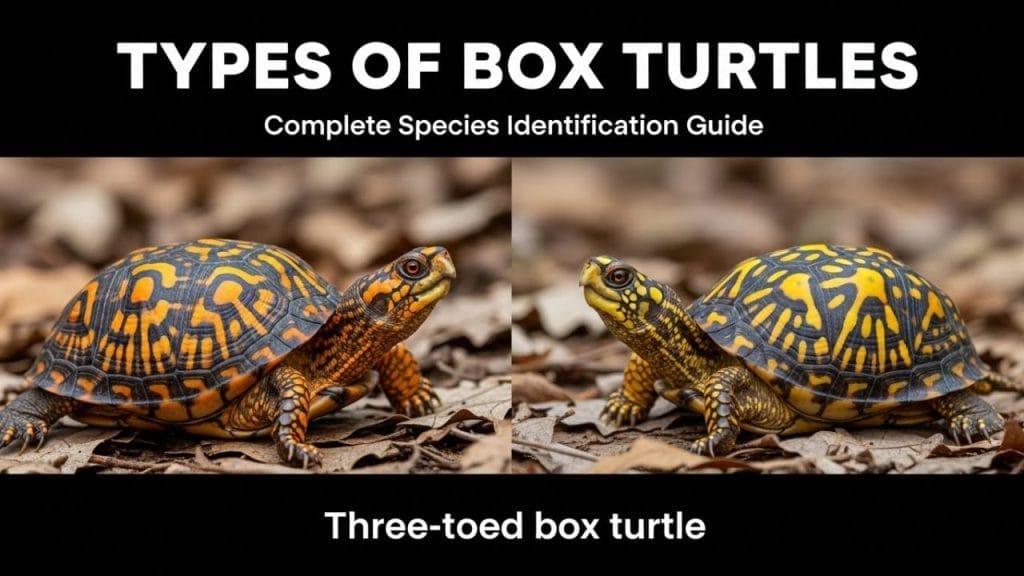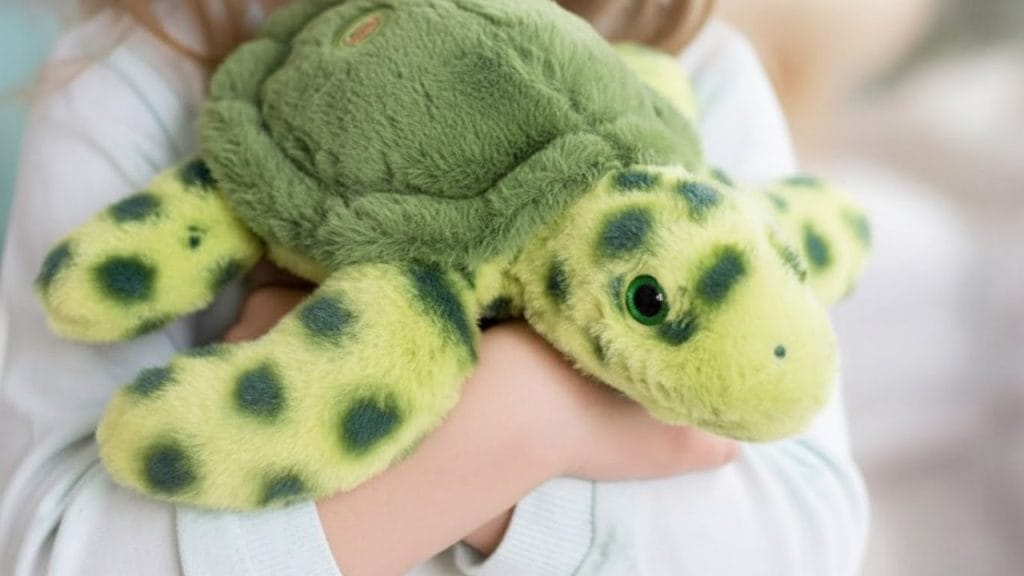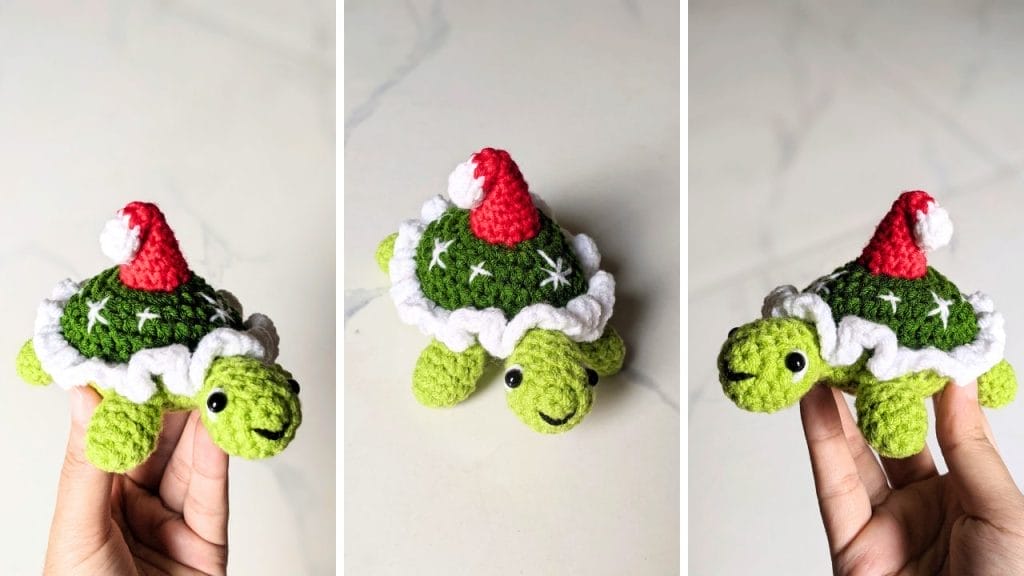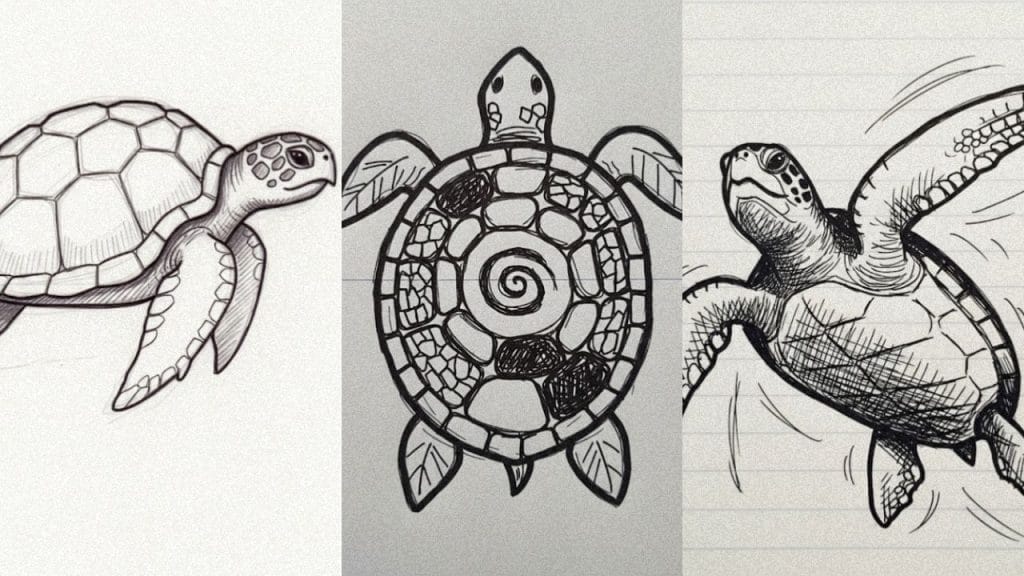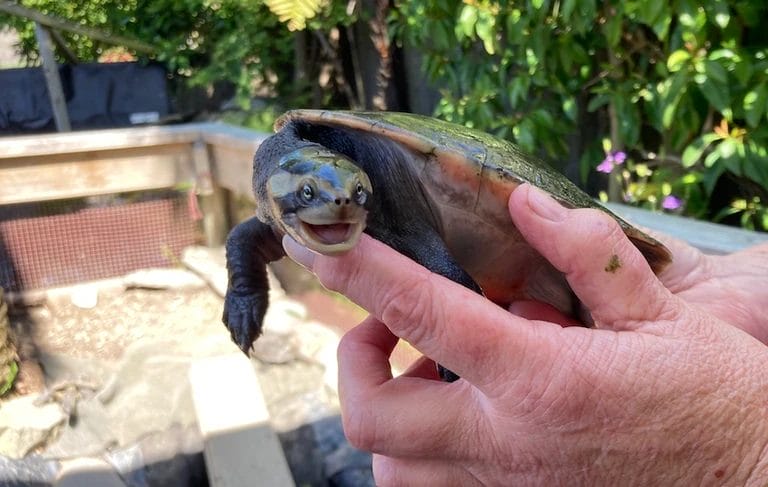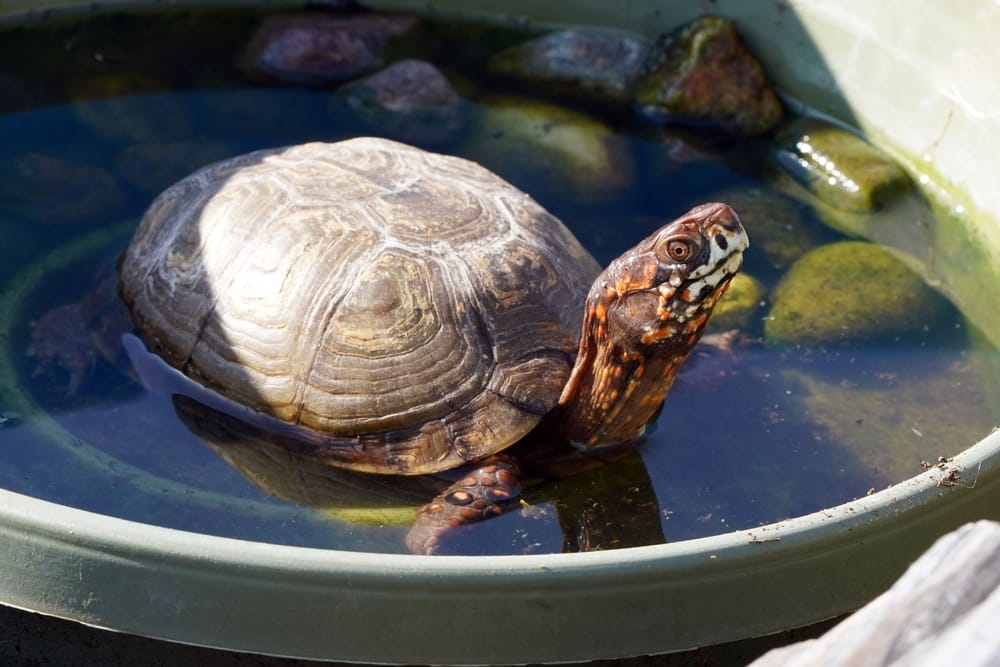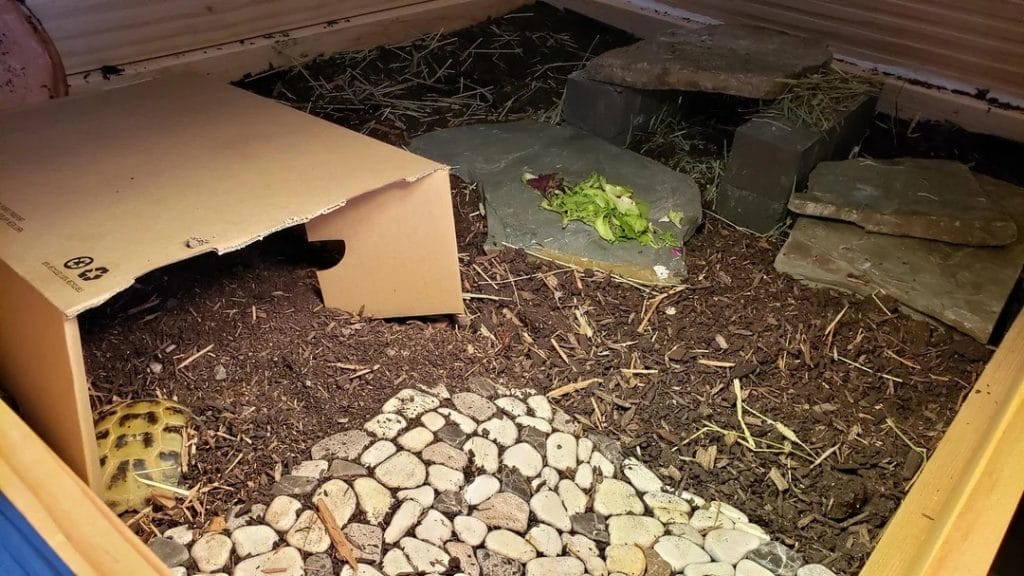How To Take Care Of Wood Turtles? | Beginner’s Guide

This post was created with help from AI tools and carefully reviewed by a human (Muntaseer Rahman). For more on how we use AI on this site, check out our Editorial Policy.
Picture this: you walk into a pet store and spot a wood turtle with its sculpted shell that looks like it was carved by a master craftsman.
Your first thought is probably “I need this little guy in my life.” But hold up – before you become a turtle parent, let’s talk about what you’re really signing up for.
Wood turtles aren’t your typical “throw some lettuce in a tank and call it a day” pets. These guys are way more impressive than they look, with personalities that’ll remind you of your dog and lifespans that might outlast your mortgage.
What Makes Wood Turtles Special?
Wood turtles are basically the overachievers of the turtle world.
These semi-aquatic creatures are known for being incredibly intelligent and responsive, often called “dog-like” by turtle enthusiasts. They’ll literally come running to you at feeding time – and I’m not talking about that slow-motion turtle shuffle you see in cartoons.
With good care, wood turtles can live 50+ years. That means your college turtle could still be hanging out when you’re telling your grandkids about the good old days.

The Reality Check: Legal Stuff You Can’t Ignore
Here’s where things get serious for a hot minute.
The species is also listed as Endangered on the IUCN Red List, making responsible captive breeding critical for their survival.
Buying wild-caught adults is probably illegal, and transporting them across state lines can violate the Lacey Act – which means hefty fines or even jail time.
Always buy captive-bred turtles from reputable breeders and check your local laws first.
Trust me, you don’t want to explain to your neighbors why there are federal agents at your door because of your pet turtle.
Box turtles face similar legal restrictions in many states, with both species protected due to wild population declines.
This Hilarious Turtle Book Might Know Your Pet Better Than You Do
Let’s be real—most turtle care guides feel like reading a textbook written by a sleep-deprived zookeeper.
This one’s not that.
Told from the snarky point of view of a grumpy, judgmental turtle, 21 Turtle Truths You’ll Never Read in a Care Guide is packed with sarcasm, sass, and surprisingly useful insights.
And hey—you don’t have to commit to the whole thing just yet.
Grab 2 free truths from the ebook and get a taste of what your turtle really thinks about your setup, your food choices, and that weird plastic palm tree.
It’s funny, it’s honest, and if you’ve ever owned a turtle who glares at you like you’re the problem—you’ll feel seen.
Housing: Building Your Turtle’s Dream Home
Size Requirements
The minimum enclosure for one adult wood turtle should be at least 48″L x 18″W x 21″H, but bigger is always better.
Think of it this way – your turtle isn’t just going to sit in a corner all day like a houseplant. These guys are explorers.
The Half-and-Half Rule
Roughly half of your turtle’s enclosure should be water, just deep enough that the turtle can breathe by stretching tiptoe from the bottom.
The other half should be land area with places to hide, bask, and dig around. Wood turtles spend significant time both in water and foraging on land, so they need both environments to be happy.
Outdoor vs Indoor Living
Wood turtles tend to do best when housed in an outdoor pond for at least part of the year, if your local climate allows.
But if you’re going the indoor route, you’ll need some serious equipment.

Temperature: Getting the Climate Right
Wood turtles are picky about their temperatures – think of them as the Goldilocks of the reptile world.
For wood turtles, the basking area should have an air temperature of 85-90°F, and the water should stay nice and cool between 60-70°F.
You’ll need a digital probe thermometer for the basking area and a quality aquarium thermometer for the water. No guessing allowed – these little guys are sensitive to temperature changes.
Lighting: Artificial Sunshine
Wood turtles require regular exposure to high-quality UVB lighting for 10-12 hours daily to maintain optimal health.
This isn’t optional. UVB lighting gives them all the vitamin D their body needs, stimulates better appetite and activity, and strengthens the immune system.
Key lighting facts:
- The UVB bulb should be half the length of the enclosure and housed in a reflective fixture
- Replace your bulb every 12 months to maintain good performance
- Keep lights on 12–14 hours/day in summer and 9–10 hours/day in winter.
Water Quality: The Make-or-Break Factor
Here’s where a lot of new turtle owners mess up big time.
You’ll need a canister-style filter capable of handling at least 2x the amount of water in the enclosure. So if you have 40 gallons of water, you need a filter rated for 80 gallons.
The golden rule for turtle tank filtration is to choose a filter rated for twice or more the capacity of your tank. Don’t cheap out here – a good filter will keep a tank clean for 3-6 months at a time.
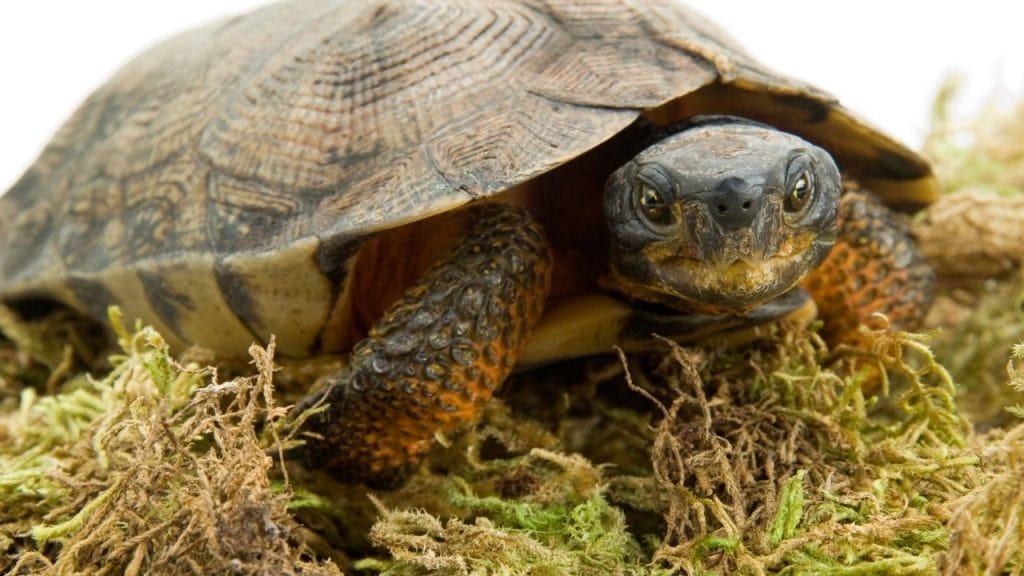
Diet: What Wood Turtles Actually Want to Eat
The Wild Truth
Wood turtles are omnivores and “facultative omnivores,” which means if they can choose, they prefer animal matter over plants.
Their favorite wild plant food is probably berries – they’re known to leave favorite areas and travel to patches of strawberries, raspberries, blackberries, or blueberries. They also love earthworms, slugs, and mushrooms can make up to 37% of an adult wood turtle’s diet in the wild.
Captive Diet Breakdown
Adult wood turtles should eat about 25–30% animal protein and 70–75% leafy greens, vegetables, and fungi. Hatchlings and juveniles need closer to 50% protein until they mature.
Safe foods for wood turtles:
| Food Category | Examples | Notes |
|---|---|---|
| Proteins | Omega One Turtle Pellets, earthworms, crickets | Should be gut-loaded if live |
| Leafy Greens | Collard greens, mustard greens, dandelion, kale | Avoid iceberg lettuce |
| Vegetables | Bell peppers, squash, sweet potatoes, green beans | Winter squash should be lightly steamed |
| Fruits | Berries, apples (seeds removed), melons | Should be less than 10% of daily food intake |
| Treats | Mushrooms, cactus pads (spines removed) | Occasional only |
Foods to Avoid
Make sure to avoid iceberg lettuce, garlic, shallots, spicy peppers, and anything with citrus. No dairy, chocolate, nuts, or fried foods – basically, if it’s processed human food, your turtle doesn’t want it.
Feeding Schedule
Baby wood turtles should be fed daily, juveniles every other day, and adults can be fed every 2-3 days.
Use the “size of the head” method – give them an amount of food roughly the size of their head (not including the neck). This prevents overfeeding, which is a common rookie mistake.

Common Beginner Mistakes (Learn From Others’ Pain)
Tank Too Small
Most people choose a tank that’s too small because they don’t account for growth – young wood turtles can grow more than one inch per year.
Get a tank that’s at least 20 gallons bigger than what you need right now.
Wrong Feeding Habits
Most turtles should be eating only once every other day, or less. Pet turtles are commonly overfed, leading to health issues.
If your turtle looks like it’s begging for food on non-feeding days, offer romaine or green leaf lettuce and remove any remaining lettuce after 2-3 days.
Overfeeding is one of the top mistakes turtle keepers make across all species, not just wood turtles.
Poor Water Quality
Don’t place your tank near a window – it helps algae grow, kills good bacteria in your filter, and can super heat or super cool the water.
Handling Too Much
Wood turtles aren’t the kind of pet you can handle regularly, but they do seem to like interacting with their humans. Some turtles will always hate being handled, so don’t insist if there’s no need.
Try hand-feeding with tongs instead – it’s way more fun for both of you.
Health: Keeping Your Turtle in Top Shape
What to Watch For
Watch for shell cracks, discoloration, deformities, wheezing, nasal discharge, or lethargy. Early detection of health issues can be crucial in saving your pet turtle’s life.
Supplements
All food should be powdered with calcium with D3, and vitamin/mineral supplements should be used 2-3 times weekly. Your turtle should have access to a cuttlebone or calcium block at all times.
But don’t go overboard – too much calcium can interfere with the absorption of other minerals and cause problems.

Winter Care: The Hibernation Question
This is where wood turtle care gets interesting.
Keeping wood turtles pretty much depends on their winter care, and “wintering” them successfully will assure decades of joy with these creatures.
If you’re keeping them outdoors and they’ve experienced summer outside, they can be left outdoors until the leaves drop, then brought indoors to a shallow container of water in a dark, cool basement where they’ll sleep the winter away.
If you’re keeping them indoors year-round and they’ve never experienced natural sunlight, they can skip hibernation entirely.
The Bottom Line
Wood turtles are incredible pets, but they’re not low-maintenance.
You’re looking at a significant upfront investment in equipment, ongoing costs for quality food and supplements, and the commitment to maintain their habitat properly for potentially 5+ decades.
But here’s the thing – if you’re willing to do it right, wood turtles will blow your mind with their personalities and intelligence. They’ll dazzle you with their intelligence and literally come running to you at feeding time.
Before you get a wood turtle:
- Check your local laws and find a reputable breeder
- Budget for a proper setup (expect $500+ initially)
- Find an exotic vet in your area
- Make sure you can commit to decades of care
If you’ve made it this far and you’re still excited about wood turtle ownership, you might just be crazy enough to do this right.
And trust me – when your wood turtle starts recognizing you and showing off that amazing personality, you’ll understand why people fall head-over-heels for these incredible creatures.
Just remember: we’d be idiots to let these amazing animals suffer because we didn’t do our homework first.


About Author
Muntaseer Rahman started keeping pet turtles back in 2013. He also owns the largest Turtle & Tortoise Facebook community in Bangladesh. These days he is mostly active on Facebook.


